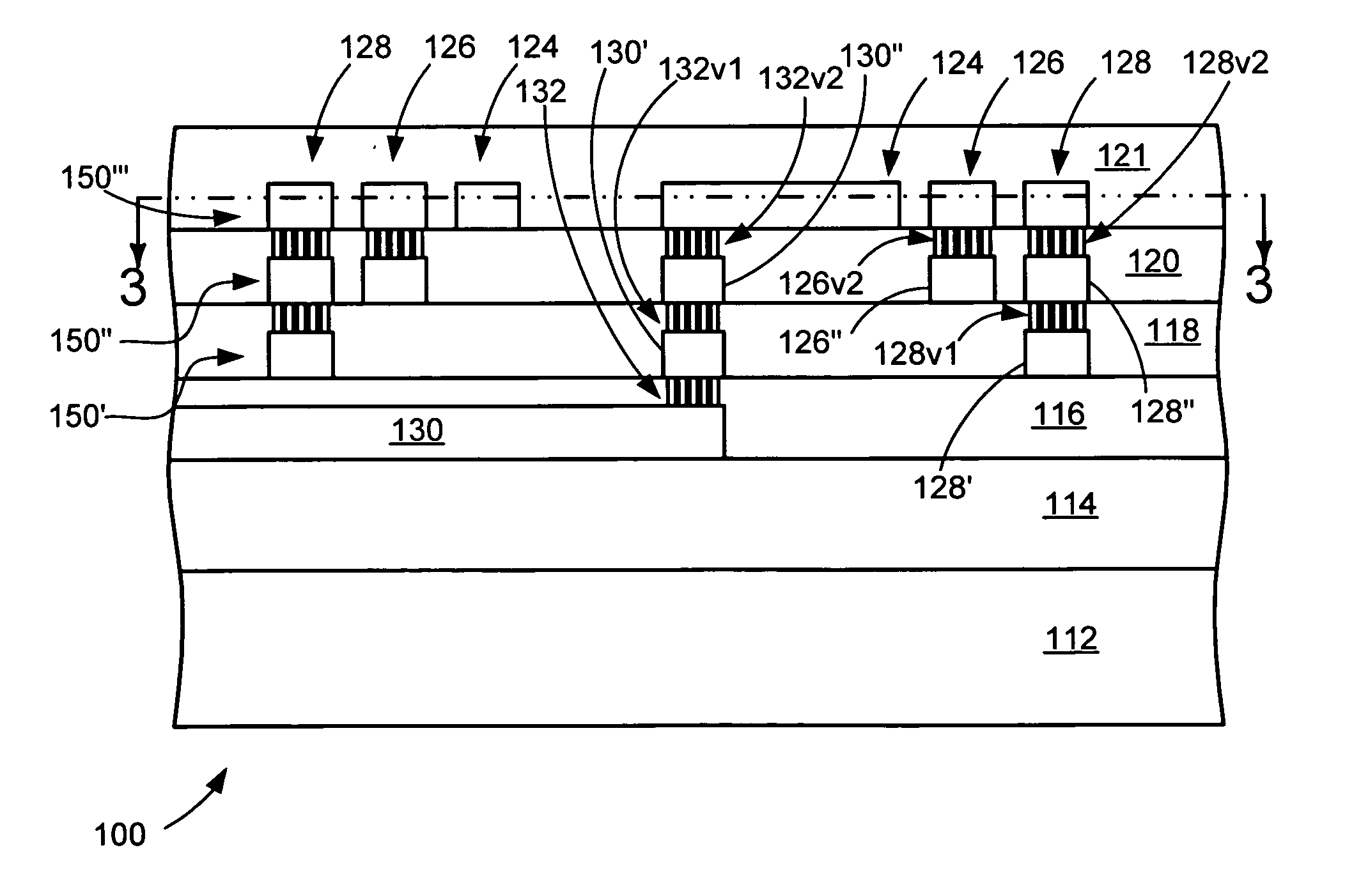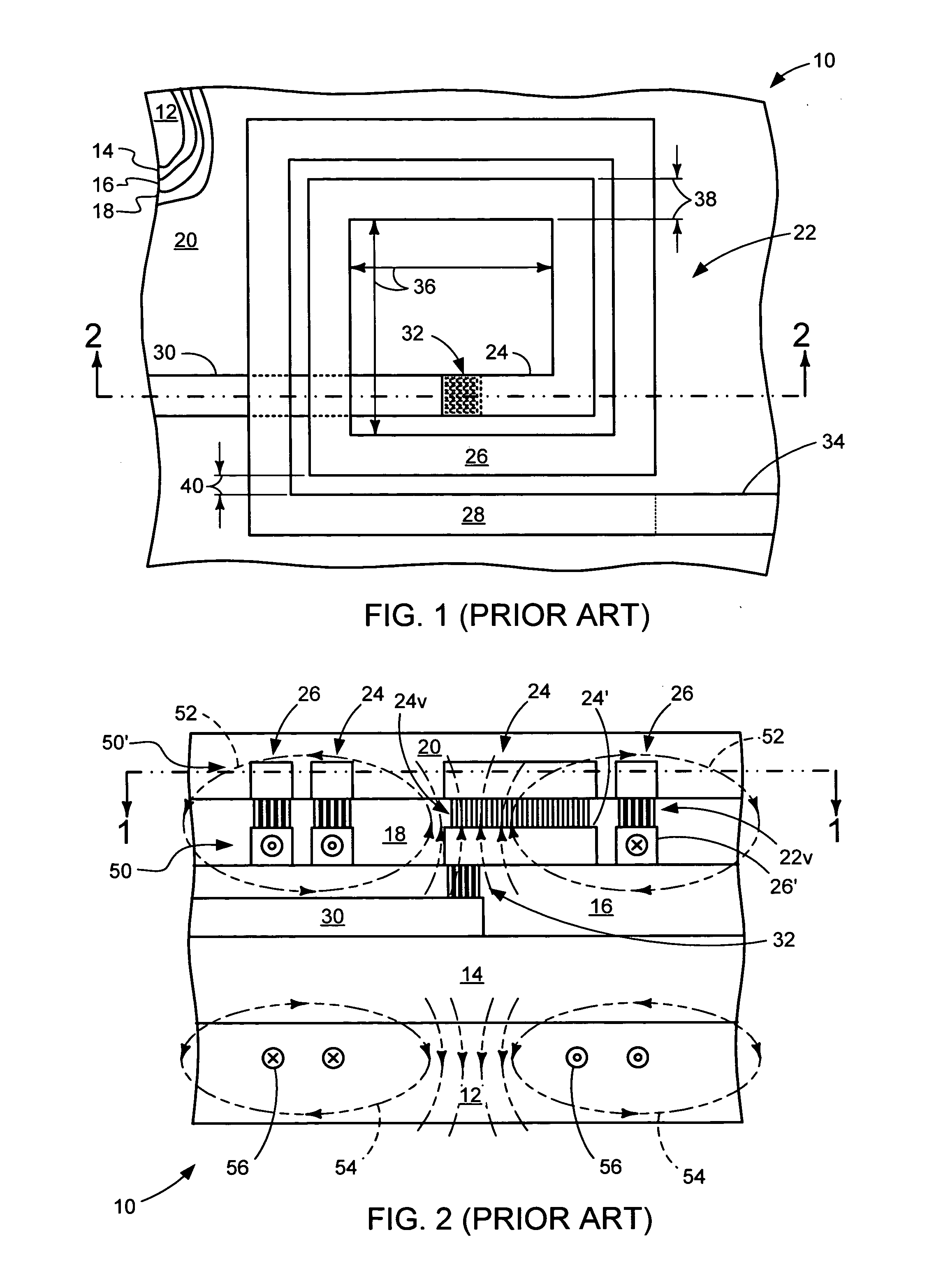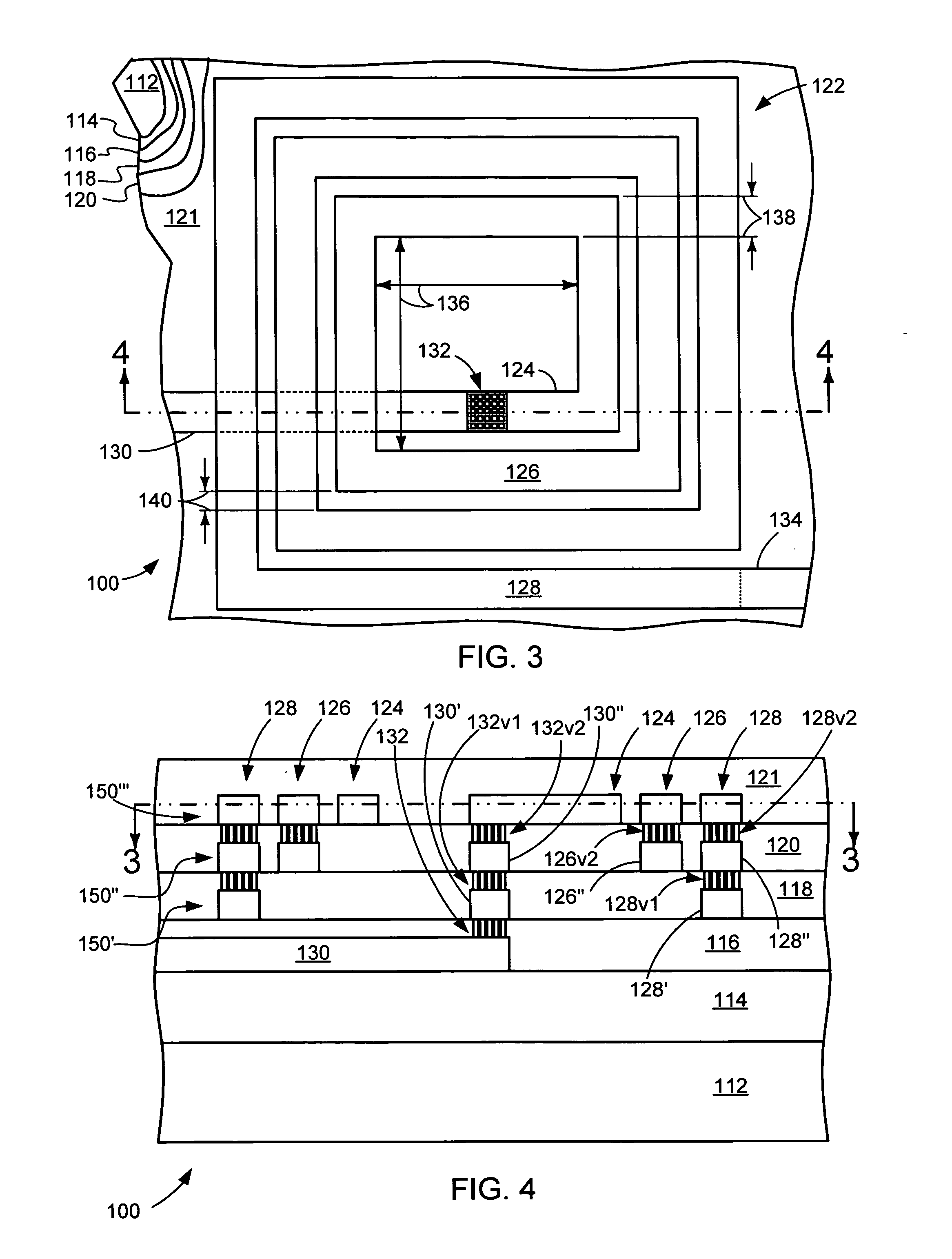Method of manufacturing 3-D spiral stacked inductor on semiconductor material
a technology of semiconductor materials and spiral inductors, applied in the field of integrated circuits, can solve the problems of reducing the performance of cmos technology, reducing the quality of cmos technology, and achieving high-performance on-chip inductors, so as to reduce current density, improve the effect of inductance, and reduce the current density
- Summary
- Abstract
- Description
- Claims
- Application Information
AI Technical Summary
Benefits of technology
Problems solved by technology
Method used
Image
Examples
Embodiment Construction
[0027] Referring now to FIG. 1 (PRIOR ART), therein is shown a cross-sectional view of a prior art on-chip inductor 10 along line 1-1 of FIG. 2 (PRIOR ART). A substrate 12, of a material such as silicon, has a plurality of dielectric layers formed thereon of a material such as silicon dioxide. Sequentially, a field dielectric layer 14 (such as a field oxide), a connecting interlayer dielectric (ILD) layer 16 (such as a silicon oxide), a first level ILD layer 18, and a second level ILD layer 20 are formed over the substrate 12. Embedded within the dielectric layers is a spiral stacked inductor 22.
[0028] The term “over” as used in herein is defined vertically above a horizontal plane parallel to the conventional surface of a wafer on which the on-chip inductor is formed regardless of the orientation of the wafer. Terms, such as “on”, “below”, “higher”, “lower”, “above”, and “under”, are defined with respect to the horizontal plane.
[0029] The term “processed” or “forming” as used her...
PUM
| Property | Measurement | Unit |
|---|---|---|
| conductive | aaaaa | aaaaa |
| size | aaaaa | aaaaa |
| magnetic losses | aaaaa | aaaaa |
Abstract
Description
Claims
Application Information
 Login to View More
Login to View More - R&D
- Intellectual Property
- Life Sciences
- Materials
- Tech Scout
- Unparalleled Data Quality
- Higher Quality Content
- 60% Fewer Hallucinations
Browse by: Latest US Patents, China's latest patents, Technical Efficacy Thesaurus, Application Domain, Technology Topic, Popular Technical Reports.
© 2025 PatSnap. All rights reserved.Legal|Privacy policy|Modern Slavery Act Transparency Statement|Sitemap|About US| Contact US: help@patsnap.com



